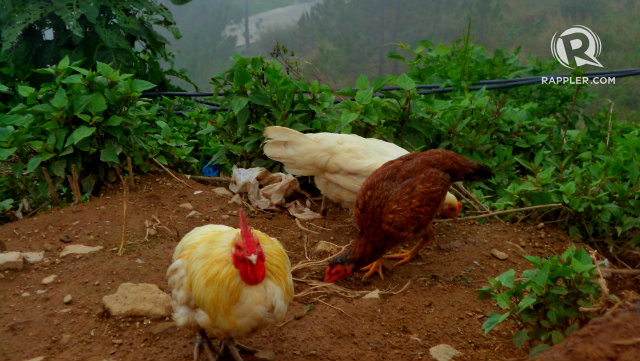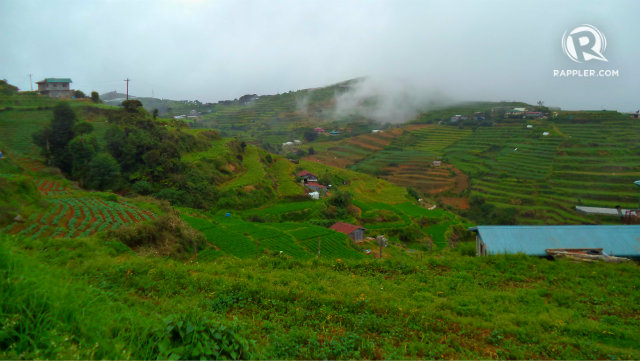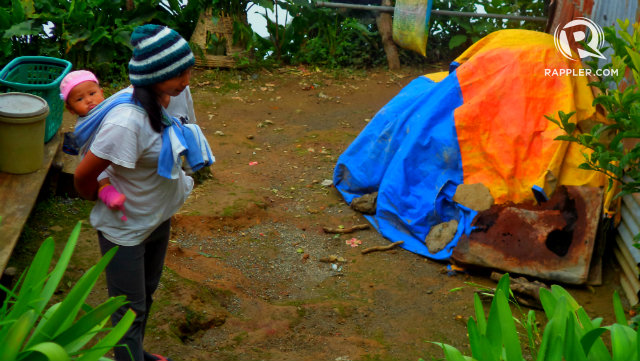SUMMARY
This is AI generated summarization, which may have errors. For context, always refer to the full article.
BENGUET, Philippines – The car engine died a few times going up the mountains of Benguet.
The sinuous two-lane road was met with rain and fog. Only a few vehicles ascended – tourists, crop-carrying jeepneys, bikers – as the air felt cooler with every turn.
At the end of the trail was the municipality of Atok, which roughly translates to “on the mountain top.”
The journey was peaceful; surrounded by mountains, rice fields, and houses standing right next to cliffs.
The place is far from the city, but vegetables are abundant.
More than 25% of children under 5 years old, however, are stunted or too short for their age, according to the local government unit’s (LGU) latest survey as of March 2014. The survey is part of a joint project by the Department of Social Welfare and Development (DSWD) and the World Food Programme (WFP) in training LGUs on food security.
Some tourists call it paradise, but a more complex story lies behind the seemingly endless rows of vegetables.
Abundant yet little
Most people in the highland town of Atok work in agriculture. Only a few, however, own lands.
Maridel Boti held her baby in an improvised carrier, which doubles as a blanket. She is a 24-year-old mother of a 4-year-old boy and a 10-month old girl. Her whole family works in lands not their own. (READ: Invisible Pinay farmers)
Maridel’s family rarely eats anything other than sayote and rice. “We have many sayote tops. Meat and fish are expensive,” she said in Ilocano.
Atok is rich in vegetables, but not in fisheries and livestock. Fish is delivered from other cities. Milkfish (bangus) can cost up to P130/kilo.
Meanwhile, sayote sells for P2.50/kilo. Farmers earn around P312/week during rainy months, but during a bad harvest, they earn as little as P12-P25/week.
“There are big-time farmers too,” said another agricultural worker. While the likes of Maridel are hired to work on farms, “big-time farmers” own hectares of land and sell diverse crops. “They’re the rich ones.”
Maridel’s son was told at school that his height and weight were “not balanced.” “But the teacher didn’t say the reason. It wasn’t explained what we should do,” she said.
She admitted that her son seems “too short,” but the young mother was clueless why.
She is not alone. Many parents remain blind to the link between nutrition and growth, local health workers observed. (READ: When hunger is a daily battle)
“Food is not the only problem,” Martha Martin, a midwife, said in Ilocano.
Martin has been working with the LGU as a midwife for over 34 years, visiting far-flung areas across Atok. (READ: Malnutrition and bad governance)
“The problem is that parents don’t make time to cook. They also lack information on health,” she added.
Most parents work in agriculture; hence much of their time is spent outside the house. Some children are left to eat processed food and meals lacking nutrition, according to Martin.
Monotonous diet
Since money is tight, families tend to repeat the same meal every day – one type of vegetable plus rice. (READ: ‘Pinggang Pinoy’)
The municipal health office observed that due to high food prices, some households experience “poor diet diversity.” More than 25% of Atok households did not consume “diverse diets,” the survey showed.
“Their diet is unbalanced, lacks protein and essential nutrients from other food groups,” Richelle dela Cruz, a DSWD nutritionist-dietitian, explained. (INFOGRAPHIC: Hidden hunger)
Aside from vegetables, it is also recommended that they get iron from other sources like meat, poultry, and fish. Legumes, an alternative to meat, also provide protein; such as monggo, kadyos, and abitsuelas.
Martin, however, said that legumes are quite expensive in Atok. “Some also don’t eat legumes, they think they’ll get arthritis.”
She stressed that eating legumes in moderation does not hurt. A 2004 study published in the New England Journal of Medicine also found that the consumption level of purine-rich vegetables like legumes “was not associated with the risk of gout,” a type of arthritis.
“The government needs to intensify health education,” Martin said. “When we conduct health seminars, only a few parents attend. Some think we’re only disturbing them.”
The lack of awareness about creative and nutritious meal preparation, combined with poverty, can result in malnutrition, Dela Cruz emphasized.
Possible solutions
Many families stopped eating vegetables – despite their abundance – because they are tired of it, said Dr Demetria Bongga, DSWD and WFP consultant, and former dean of the UP College of Home Economics.
“If they don’t have money for meat, they opt to eat rice with condiments,” Bongga shared. Locals call this labay or rice with sugar.
Bongga also clarified that poor nutrition, not genetics, is behind the stunted growth among some of Atok’s children. “Look at what they eat first.”
She also noted that Atok’s local producers – although their food production is high – face problems because of importers. To beat the competition, local producers are forced to lower their prices.
“We need policies. For areas with adequate food supply, there shouldn’t be importers,” Bongga argued. “[Local farmers’] income is low. They’re losing so much in production cost, burying them in debts.”
“To fight malnutrition, we need to break this cycle,” she added. Bongga also recommended that Atok families look at flowers as an additional source of income. “100 square meters of flowers can sell more than 100 square meters of vegetables.” However, this may entail big production costs.
Another suggestion is the “magic square gardening,” which is a 40-square-foot plot of various vegetables. “They can both sell and eat this. So that diets won’t be monotonous,” Bongga said.

Martin, however, observed that most families are not interested in livestock because they are used to planting. “But [livestock] is possible. It can help. But we’ll need help.”
In the meantime, Maridel hopes that her baby will grow up healthy. How? She has yet to find out. – Rappler.com
How can we help fight hunger, its causes, and effects? Report what your LGU is doing, recommend NGOs, or share creative solutions. Send your stories, ideas, research and video materials to move.ph@rappler.com. Be part of the #HungerProject.
Add a comment
How does this make you feel?





There are no comments yet. Add your comment to start the conversation.